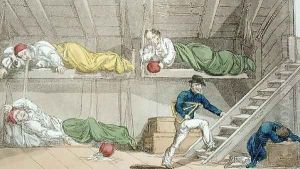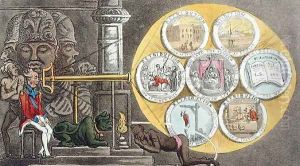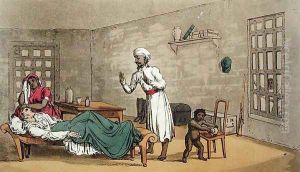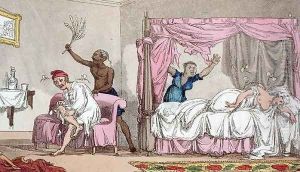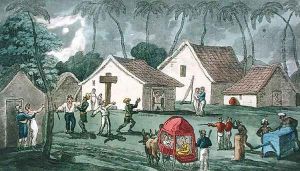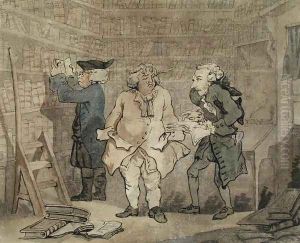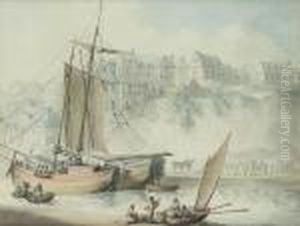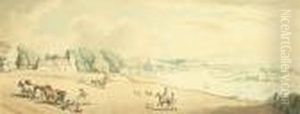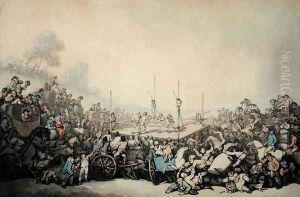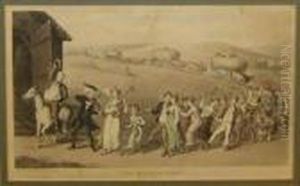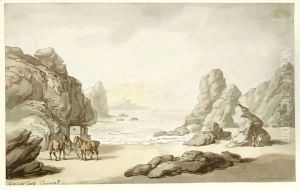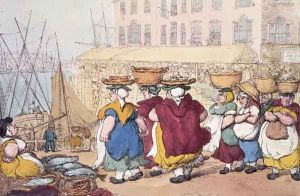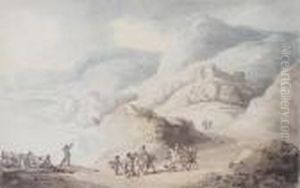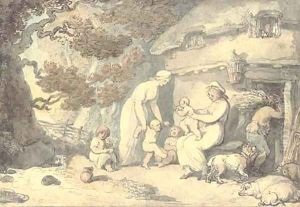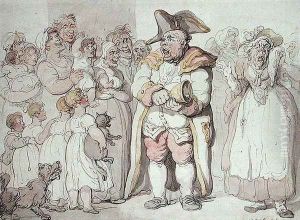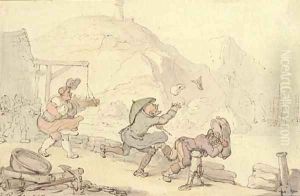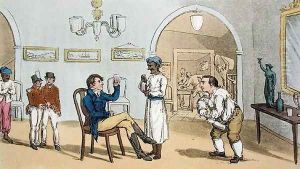





Qui Hi in the Bombay Tavern, from The Grand Master, or Adventures of Qui Hi? in Hindostan. A Hudibras Poem in Eight Cantos by Quiz, by William Combe 1741-1823 published by Thomas Tegg, London, 1815
-
About Reproduction
Discover the allure of art with our faithful reproduction of "Qui Hi in the Bombay Tavern, from The Grand Master, or Adventures of Qui Hi? in Hindostan. A Hudibras Poem in Eight Cantos by Quiz, by William Combe 1741-1823 published by Thomas Tegg, London, 1815", originally brought to life by the talented Thomas Rowlandson. Unlike posters or prints, our hand-painted oil painting breathes an unique sense of depth and texture into your space. Every detail, every stroke, and every texture is meticulously recreated, paying the perfect homage to Thomas Rowlandson and his artistic vision.
Owning this piece is more than just decoration - it's a statement of your refined taste in art. Let the vibrant colors and intricate details of this replica serve as a daily reminder of the beauty in our world. Elevate your decor and appreciate the richness of art with our replica of this masterpiece.
-
Painting Description
"Qui Hi in the Bombay Tavern" is a notable segment from "The Grand Master, or Adventures of Qui Hi? in Hindostan," a satirical poem written by William Combe and published in 1815 by Thomas Tegg in London. The poem is illustrated by the renowned caricaturist Thomas Rowlandson, whose vivid and often humorous illustrations complement Combe's biting satire. The work is structured in eight cantos and follows the adventures of the titular character, Qui Hi, a British expatriate navigating the complexities and absurdities of colonial life in India.
William Combe, an English writer known for his satirical and humorous verse, employs a style reminiscent of Samuel Butler's "Hudibras," using rhymed tetrameter couplets to deliver his critique. The poem delves into the social, political, and cultural dynamics of British India, offering a scathing commentary on the behaviors and attitudes of the British colonialists. Through the character of Qui Hi, Combe explores themes of greed, corruption, and the often farcical nature of colonial administration.
Thomas Rowlandson's illustrations are integral to the work, providing a visual satire that enhances the text's impact. Rowlandson, celebrated for his keen eye for detail and his ability to capture the essence of social commentary through art, brings the characters and scenes to life with his distinctive style. His illustrations for "The Grand Master" are characterized by their exaggerated expressions and dynamic compositions, which serve to underscore the absurdity and excesses depicted in Combe's verse.
"Qui Hi in the Bombay Tavern" specifically highlights the social interactions and the often ludicrous behavior of the British expatriates in a colonial setting. The tavern, a microcosm of the larger colonial society, becomes a stage where the follies and vices of the characters are laid bare. Through sharp wit and vivid imagery, Combe and Rowlandson offer a critique that is both entertaining and thought-provoking, making "The Grand Master, or Adventures of Qui Hi? in Hindostan" a significant work in the canon of satirical literature.
-
Lead Time & Shipping
When you order this oil painting replica, it typically takes 2-3 weeks to paint. If the artwork is more complex, it might need a little more time to ensure the best quality. Once it's ready, we'll send you a photo for your approval. After you give the green light, we'll ship it to you for free.
-
Return & Refund
We believe in the quality of our hand-painted oil painting reproductions, and your satisfaction is our priority. If for any reason, you are not completely satisfied with your purchase, we offer a 45-day return policy. You can return your artwork within 45 days of receipt and receive a full refund. Please note that the artwork must be returned in the original packaging and in the same condition as it was received.





